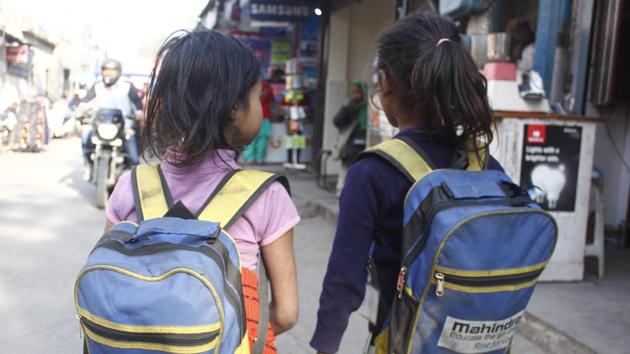ASER 2018: In UP, 50% students still go to pvt schools
Nearly 50% children (aged 6-14 years) in UP are enrolled in private schools whereas Pan India only 31% students go to private institutions, according to 13th Annual Status of Education Report (Rural)-2018 released on Tuesday.
Nearly 50% children (aged 6-14 years) in UP are enrolled in private schools whereas Pan India only 31% students go to private institutions, according to 13th Annual Status of Education Report (Rural)-2018 released on Tuesday.

Till 2016, private school enrollment was increasing in the state, but in 2018 the figures show a decline. But half of the children are still studying in private schools. While around 52% children were studying in private institutions in 2016, the figure has come down to nearly 50% in two years’ time.
Private schools students continue to perform better than those in government schools (in subtraction/division levels). This is despite the fact that in basic education, the government proposed an amount of ₹18,167 crore for the Sarva Shiksha Abhiyan (SSA).
Similarly, ₹116 crore was allocated in budget 2018-19 for free distribution of textbooks ( ₹76 crore) and uniforms ( ₹40 crore) to all children from Class 1 to 8.
However, UP’s out-of-school percentage for age group 6 to 14 at 4.9% is still amongst the highest in the country. The enrollment for older age group has declined slightly over the past 10 years, but the gender gap continues.
In ASER-2018, attendance of UP children saw an improvement from 56% in 2016 to about 60% in 2018. However, it is still well short of the country’s tally of 72% attendance.
“UP needs to keep building on the improvement in attendance in coming years,” said the report.
Reading levels have improved between 2016 and 2018. The report shows that reading levels in UP improved across all grades between 2016 and 2018. UP’s reading levels have crossed the national average for the first time in most grades.
Improvement in reading (at least at the foundational level) is visible across grades in both kinds of schools over time.
Performance of children in UP in Class 8 who can read at Class 2 level crossed the national average this year and is better than several neighbouring states.
“The good news is that learning levels in UP have improved. Concerted work on learning levels has been undertaken in the last two years,” said Sarvendra Vikram Singh, director, basic education, UP.
ASER-2018 also showed that arithmetic levels improved across all grades as compared to 2016. However, arithmetic levels in UP remain below the national average.
Arithmetic levels have improved across all grades since 2018. The ability to do basic operations like division has improved across all grades between 2016 and 2018. However, in government schools in Class 8, there are still 75% children who have difficulty with operations like division, said the report.
Most school facilities have shown an improvement over time or stayed the same. Usable toilets in school have shown a large improvement between 2016 and 2018. Only library books and their use seemed to have declined significantly.
In UP, ASER-2018 covered 70 districts. As many as 82,470 children, 2,100 villages and 41,984 households were surveyed. According to the report, the proportion of children not enrolled in school has fallen across all age groups (between 2016 and 2018).
Discover the complete story of India's general elections on our exclusive Elections Product! Access all the content absolutely free on the HT App. Download now!
Get latest news on Education, along with Board Exam, Competitive Exam and Exam Result at Hindustan Times. Also get latest Job updates on Employment News










